Contents
It is difficult to imagine any dacha without a few beds of onions. This vegetable has long been included in most national dishes, and today onions are one of the most important ingredients in the menu of a simple man in the street. Growing onions is not at all difficult: after all, for this you don’t have to suffer with seedlings, hardening, diving and other manipulations with plants. All the gardener needs to do is plant the seeds and keep the soil moist.

What is the difference between growing onions on a head, how to plant onions correctly in order to get a good harvest – this will be an article.
When to plant an onion
Plant onions in the spring. To better understand the agricultural technology of this process, you need to learn at least a little about the culture itself and its features.
So, onions are biennial plants. The sowing material of this crop is small black seeds – nigella. They ripen in onion inflorescences – in arrows.
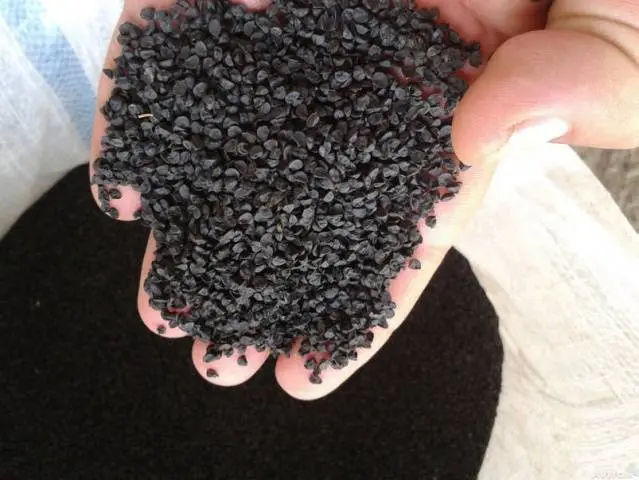
In the first year, it is necessary to sow nigella. This can be done both in spring and autumn – a lot here depends on the climate in the region and winter frosts. It is impossible to grow a full-fledged bulb in one season from a nigella, small turnip-sets grow from seeds, about 1-2 cm in diameter.
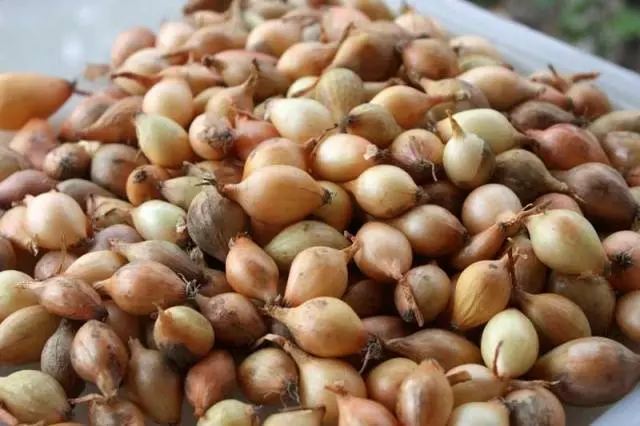
Именно эти севки и нужно высадить следующей весной – из них уже вырастут крупные головки, пригодные для употребления в пищу и зимнего хранения.
The main rule in determining the date of planting a sevka is a consistently warm air temperature. Until the earth in the region warms up to at least 12 degrees, the onion is not planted on the head.
Such a strict restriction is not due to the fact that the heads are too afraid of cold and frost – the culture is quite capable of surviving a cold snap. But at low temperatures and lack of heat, the green mass develops abundantly, while the lower part – the turnip, on the contrary, grows poorly. As a result, long hollow feathers grow out of the greens – arrows in which onion seeds ripen and which weaken its head, making the bulb unsuitable for eating.
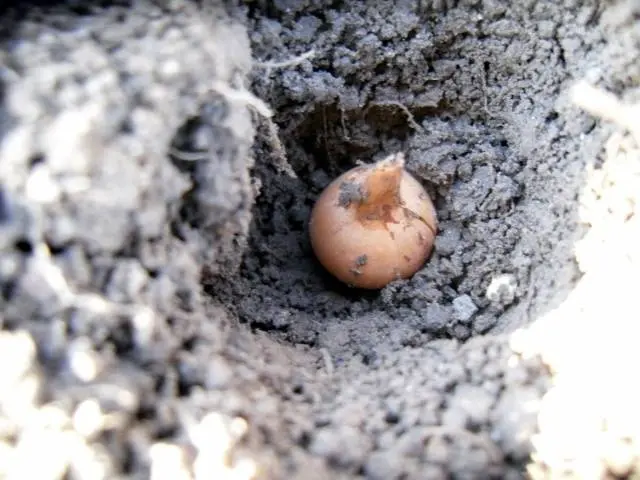
Selection of planting material
You can either buy heads for planting onions in agricultural stores or grow them yourself from seeds – nigella. Self-growing, of course, is more profitable, but in cold areas, seeds can easily freeze in the ground. The owner of the cottage will have to cover them with a film, monitor the temperature and humidity – the result is not worth such work, the price of onion sets is not so great.
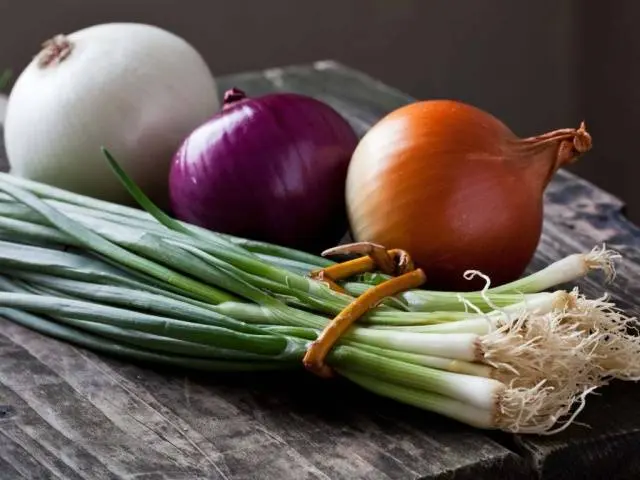
The yield of onions largely depends on which variety was chosen for cultivation. The fact is that the onion culture is divided into many varieties, they can be zoned, intended for open ground or protected plantings, differ in purpose: for growing on a feather or on a head.
Поэтому для того чтобы собрать хороший урожай крупных головок, необходимо выбирать правильный сорт репчатого лука. Покупать посадочный материал лучше у проверенных производителей.
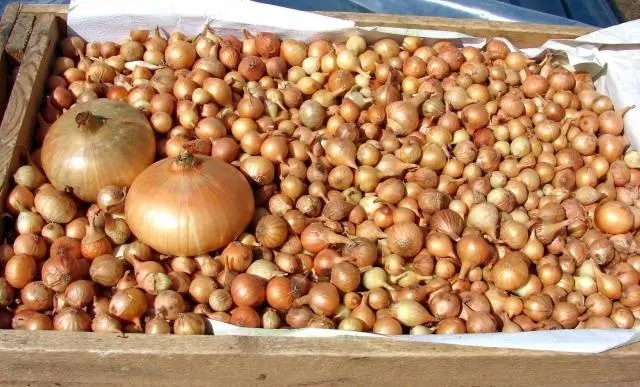
In addition, they do not tolerate long-term storage – the seed may be shrunken and empty.
For growing per head, you need to choose medium-sized sets, the diameter of the bulbs should be from 1 to 2 cm. The largest and strongest bulbs suitable for long-term storage will grow from such material.
Planting onions in the spring on the head
When the onion variety is selected and the planting material is found, you can proceed directly to planting the bulbs in the ground. For convenience, this process is best divided into several stages.
They begin to take out the onion sets from the storage facilities in early April, when the sun already warms the earth well.
Advice! It is necessary to store the heads for planting at an air temperature of about 18-20 degrees and a normal level of humidity.
Sorting sevka for planting on the head
Planting material must first be sorted. For this bulbs are distributed by size:
- головки диаметром до 1 см сгодятся только для выращивания зелени;
- луковицы крупнее двух сантиметров также непригодны для получения хороших головок – их перья непременно пойдут в стрелки. Из таких луковиц хорошо выращивать семена для следующего урожая;
- but onions ranging in size from 1 to 2 cm are most suitable for growing per head, and they must be selected in a separate container.
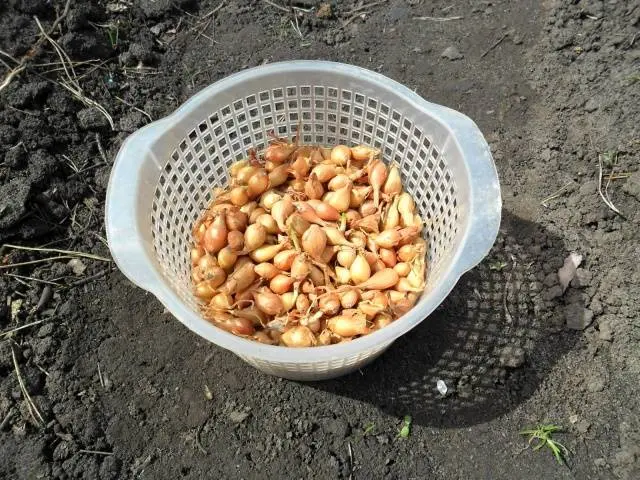
Теперь и эти, подходящие по размеру головки, необходимо тщательно осмотреть и отбраковать поврежденные, пустые, подгнившие репки – они непригодны для выращивания.
Head treatment before planting
Перед тем как посадить лук в почву, его необходимо правильно подготовить. Обработка посадочного материала состоит в основном из прогревания луковиц. Это нужно делать для того чтобы обезопасить растения от появления стрелок – если луковицы не прогреть, стрелки появятся со стопроцентной вероятностью.
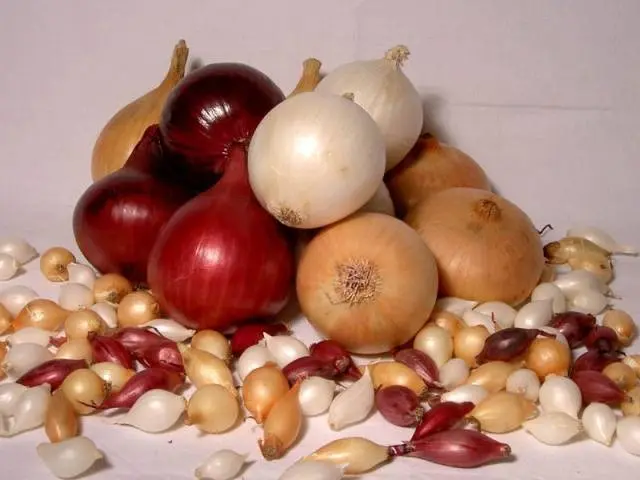
Warm the onion in one of the following ways:
- Заносят головки в дом за две-три недели до предполагаемой даты высадки на грядки. Раскладывают севок в один слой в сухом и теплом месте, где постоянно поддерживается температура на уровне 20-25 градусов. Лучшим место для этого станет верх шкафов или высокие полки.
- You can reduce warming up by increasing the air temperature. Two or three of them are enough if the onion is placed in a place where the temperature will not fall below 35 degrees. It can be a heating boiler, radiators or heaters. The main thing is not to overheat the bulbs, otherwise they will rot and will not be able to sprout.
- The express method consists in even more intense heating. For its implementation, the onion is placed in water, the temperature of which is 50 degrees. Bulbs are kept here for a quarter of an hour. Then they must be cooled by placing them in cold water for 15 minutes too. This procedure will additionally harden the bow, make it stronger.
Choose a method of heating, depending on how much time the summer resident has. If onion sets were bought right on the eve of the upcoming planting, it remains only to use the express method.
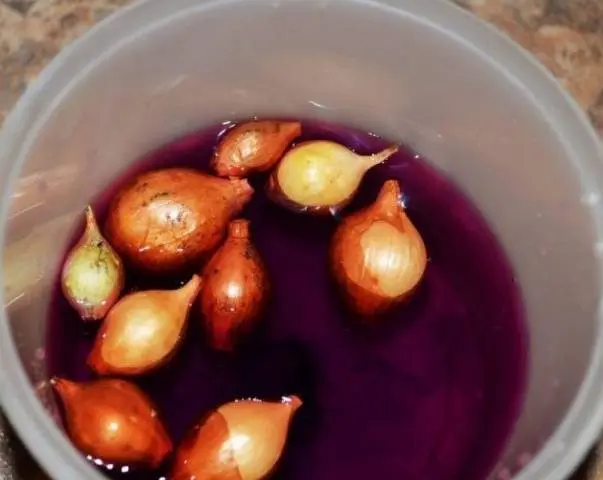
Further preparation of the onion is to disinfect it. You can also choose one of the common methods:
- soak the heads in a solution of table salt – a spoonful of salt per liter of water;
- dip the bulbs in a strong solution of potassium permanganate (the composition should be dark cherry in color);
- use copper sulfate instead of manganese.
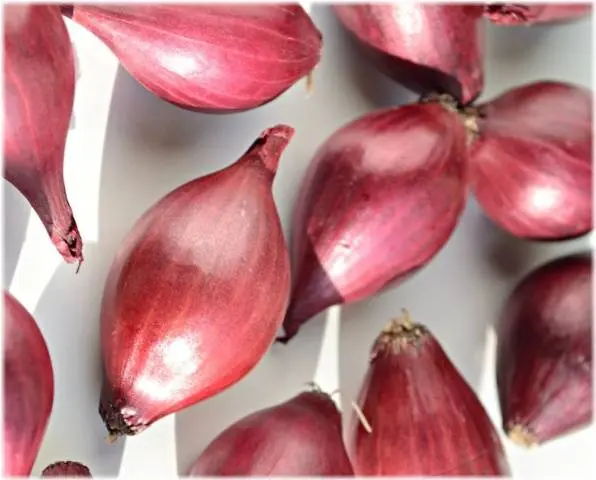
In any of the listed solutions, the bulbs are soaked for no longer than half an hour. And after treatment with potassium permanganate and vitriol, the onion must be washed with running water so as not to burn the sprouts.
The next stage of preparation is feeding the onion. Для этого головки можно поместить на 10-15 минут в раствор комплексного удобрения, купленного в специализированном магазине. Не стоит слишком увлекаться удобрениями – луку не нужны обильные подпитки.
After all the procedures, the onion heads are dried – the material is ready for planting!
На каком расстоянии сажать лук, и как это правильно сделать
It is necessary to prepare the site for planting onions in the fall. For these purposes, they choose a place on the sunny side of the garden, it is better if it is a hill or a flat area – you should not plant onions in a lowland.

In autumn, the earth in the selected area must be dug up to the depth of a spade bayonet. Ideally, if you can add humus or compost to the soil. You should not use fresh organic matter – from an excess of nitrogen, the onion will only go green, which in this case is bad, because the gardener needs large turnips.

The soil dug up with fertilizer is left until spring. In the spring, a couple of weeks before planting, the earth is dug up again and left for clumping and compaction.
Plant onions in compliance with simple rules:
- The beds are better to do high.
- The grooves for the bulbs should not be very deep – 4-5 cm is enough.
- The distance between the rows of onions is kept within 25-35 cm.
- The interval between the heads should correspond to the size of the set itself – basically 5-8 cm is enough. With more dense plantings, you will have to thin out the onions, otherwise the heads will grow small.
- The onions are pressed a little into the groove with your fingers so that they go deep into the ground by only 1 cm. Deep planting will make it difficult for the feathers to germinate and slow down the onion vegetation.
- Поливать грядки после посадки не нужно – головкам достаточно влаги из весеннего грунта.
Onion planting completed.
13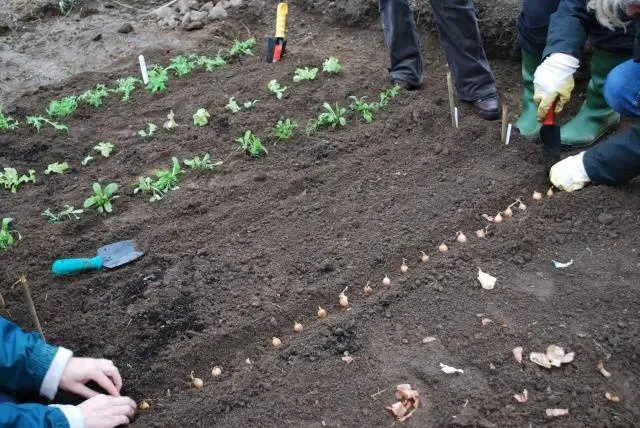
How to care for growing onions
Caring for onion beds is very simple:
- water as the soil dries out, no more than once a week;
- stop watering at the stage of head growth, otherwise they will be watery and rot;
- before harvesting, watering is stopped three weeks in advance;
- there is no need to fertilize onions, especially if compost or humus has been added to the soil since autumn;
- от вредителей и грибка перья лучше обрабатывать народными средствами, такими как настой крапивы или древесная зола;
- от луковой мошки грядки защитит посадка, чередующаяся с рядами моркови;
- weeds are dangerous for the culture, they stop the growth of heads – it is recommended to mulch the beds with humus;
- you need to harvest when the onion feathers fall;
- before storing the bulbs must be thoroughly dried in the sun.
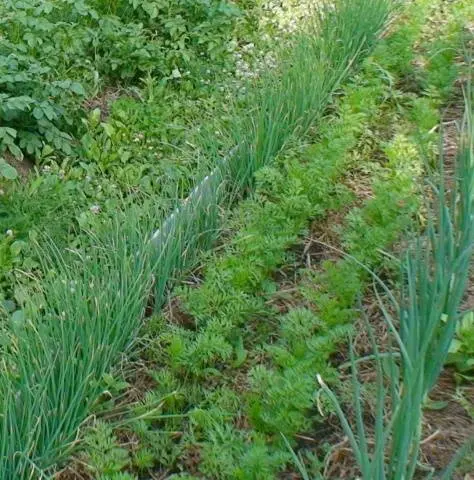
The harvest, which I grew with my own hands, turns out to be surprisingly tasty! It is worth it to put in quite a bit of effort and grow onions in your dacha, and not buy a vegetable in a supermarket.









